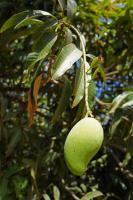Why Tomato Plants Die
Tomato plants are a popular addition to any vegetable garden or even as potted plants on a balcony. They are versatile and can be used for salads, sauces, and many other dishes. However, despite their popularity, tomato plants are vulnerable to a variety of diseases, pests, and environmental conditions that can cause them to die. This article will explore the main reasons why tomato plants die and provide tips on how to prevent it from happening.
Poor Soil Conditions
One of the primary reasons why tomato plants die is due to poor soil conditions. Tomatoes require a nutrient-rich soil with proper drainage to grow and thrive. Soil that is too compacted or too wet can lead to root rot, which can quickly kill the plant. Soil that is deficient in key nutrients such as nitrogen, phosphorus, and potassium can also stunt the growth of the plant and eventually lead to its demise. To prevent this, it is important to test the soil and amend it with organic matter if necessary.
Pests and Diseases
Tomato plants are also susceptible to a variety of pests and diseases that can cause them to die. Common tomato plant pests include aphids, spider mites, and whiteflies, which can damage the plant and transmit viruses. Tomato plant diseases such as fusarium wilt, verticillium wilt, and late blight can quickly kill the plant and spread to other plants in the area. To prevent these issues, it is important to keep a close eye on the plants, remove any diseased or infected parts immediately, and apply organic pest control measures such as neem oil or insecticidal soap.
Environmental Factors
Environmental factors such as extreme heat, cold, or drought can also cause tomato plants to die. Tomatoes require consistent watering and adequate sun exposure to thrive, and extreme fluctuations in temperature or moisture levels can stress the plant and eventually lead to its death. To prevent this, it is important to provide consistent care and monitoring of the plant throughout the growing season.
Choosing the Wrong Variety
Finally, choosing the wrong tomato plant variety for your particular growing conditions can also lead to plant death. Certain tomato varieties may be more prone to disease, pests, or environmental stress than others. Be sure to research and choose a variety that is appropriate for your climate and growing conditions to ensure the best chance of success.
Conclusion
In conclusion, tomato plants are a beloved addition to many gardens but can be vulnerable to a variety of factors that can cause them to die. It is important to maintain nutrient-rich soil, prevent and treat pests and diseases, monitor environmental conditions, and choose the right variety to ensure the best chance for a healthy and fruitful plant.

 how many times do yo...
how many times do yo... how many planted tre...
how many planted tre... how many pine trees ...
how many pine trees ... how many pecan trees...
how many pecan trees... how many plants comp...
how many plants comp... how many plants can ...
how many plants can ... how many plants and ...
how many plants and ... how many pepper plan...
how many pepper plan...




























